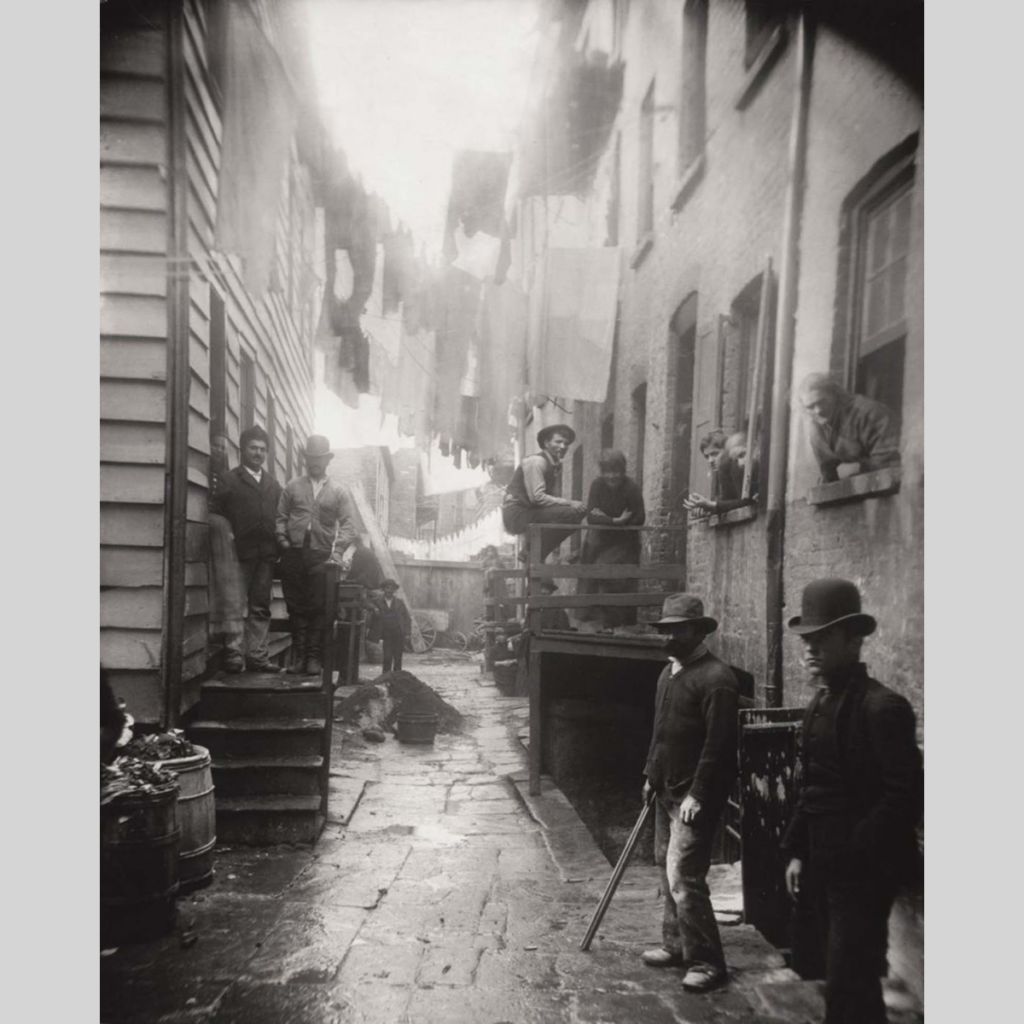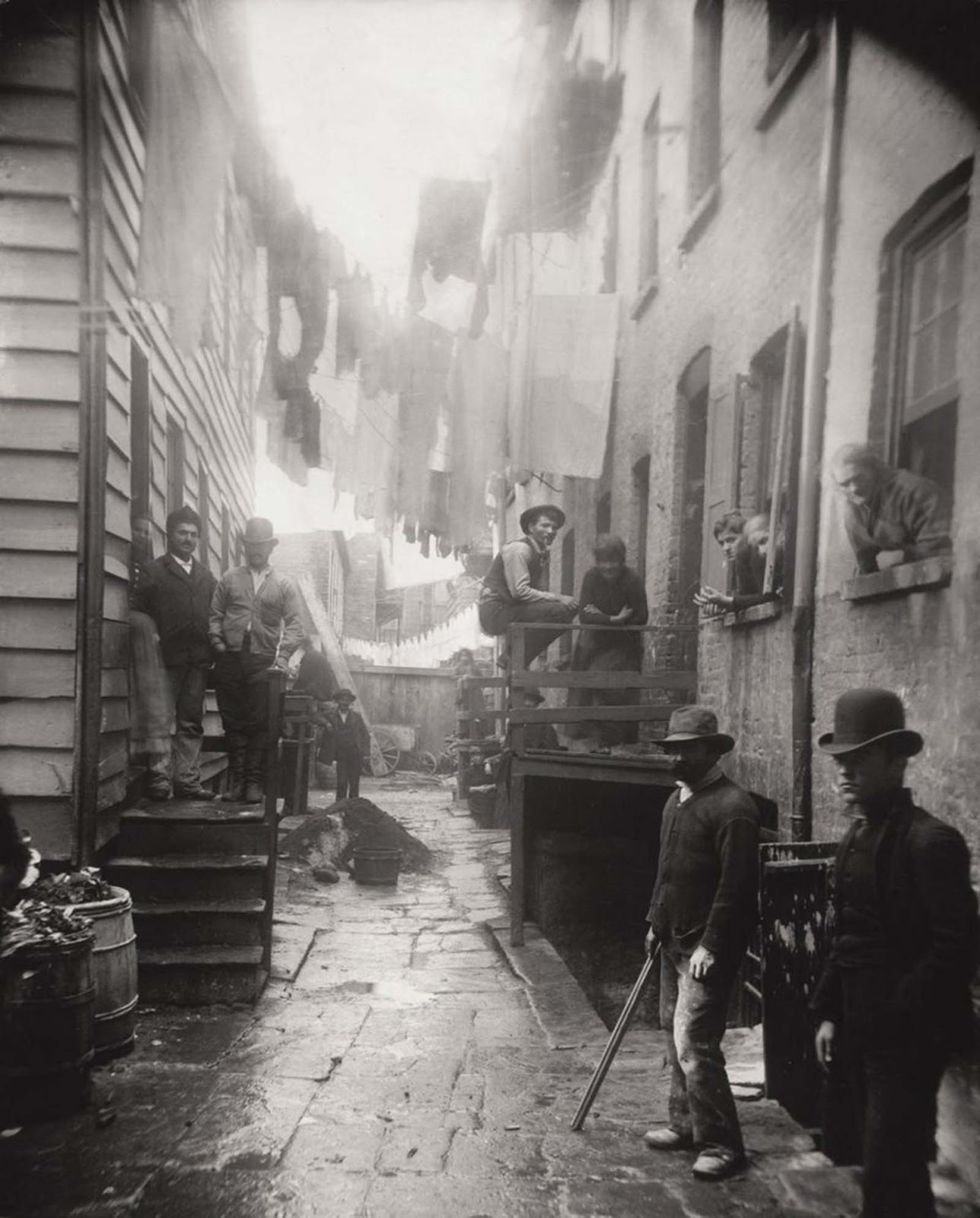
 Late 19th-century New York City was a magnet for the world’s immigrants, and the vast majority of them found not streets paved with gold but nearly subhuman squalor.
Late 19th-century New York City was a magnet for the world’s immigrants, and the vast majority of them found not streets paved with gold but nearly subhuman squalor.
While polite society turned a blind eye, brave reporters like the Danish-born Jacob Riis documented this shame of the Gilded Age.
Riis did this by venturing into the city’s most ominous neighborhoods with his blinding magnesium flash powder lights, capturing the casual crime, grinding poverty and frightful overcrowding.
Most famous of these was Riis’ image of a Lower East Side street gang, which conveys the danger that lurked around every bend.
Such work became the basis of his revelatory book How the Other Half Lives, which forced Americans to confront what they had long ignored and galvanized reformers like the young New York politician Theodore Roosevelt, who wrote to the photographer, “I have read your book, and I have come to help.”
Riis’ work was instrumental in bringing about New York State’s landmark Tenement House Act of 1901, which improved conditions for the poor. And his crusading approach and direct, confrontational style ushered in the age of documentary and muckraking photojournalism.